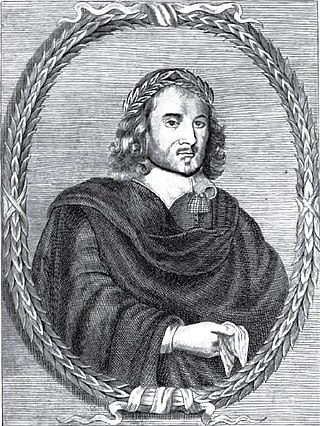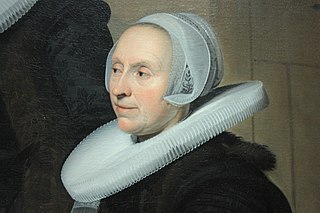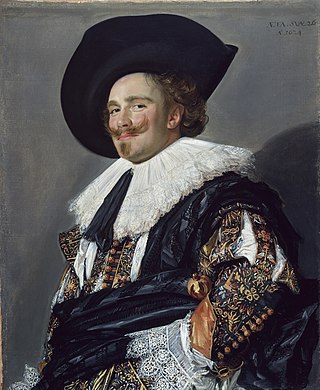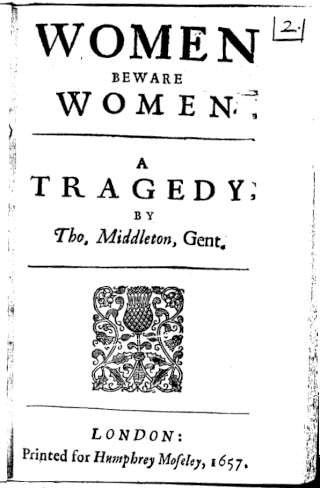Related Research Articles

Thomas Middleton was an English Jacobean playwright and poet. He, with John Fletcher and Ben Jonson, was among the most successful and prolific of playwrights at work in the Jacobean period, and among the few to gain equal success in comedy and tragedy. He was also a prolific writer of masques and pageants.

Thomas Dekker was an English Elizabethan dramatist and pamphleteer, a versatile and prolific writer, whose career spanned several decades and brought him into contact with many of the period's most famous dramatists.
William Rowley was an English Jacobean dramatist, best known for works written in collaboration with more successful writers. His date of birth is estimated to have been c. 1585; he was buried on 11 February 1626 in the graveyard of St James's, Clerkenwell in north London.

All's Lost by Lust is a Jacobean tragedy by William Rowley. A "tragedy of remarkable frankness and effectiveness," "crude and fierce," it was written between 1618 and 1620.

A ruff is an item of clothing worn in Western, Central, and Northern Europe and Spanish America from the mid-16th century to the mid-17th century. The round and flat variation is often called a millstone collar after its resemblance to millstones for grinding grain.

Fashion in the period 1550–1600 in European clothing was characterized by increased opulence. Contrasting fabrics, slashes, embroidery, applied trims, and other forms of surface ornamentation remained prominent. The wide silhouette, conical for women with breadth at the hips and broadly square for men with width at the shoulders had reached its peak in the 1530s, and by mid-century a tall, narrow line with a V-lined waist was back in fashion. Sleeves and women's skirts then began to widen again, with emphasis at the shoulder that would continue into the next century. The characteristic garment of the period was the ruff, which began as a modest ruffle attached to the neckband of a shirt or smock and grew into a separate garment of fine linen, trimmed with lace, cutwork or embroidery, and shaped into crisp, precise folds with starch and heated irons.

Fashion in the period 1600–1650 in Western clothing is characterized by the disappearance of the ruff in favour of broad lace or linen collars. Waistlines rose through the period for both men and women. Other notable fashions included full, slashed sleeves and tall or broad hats with brims. For men, hose disappeared in favour of breeches.

Bands are a form of formal neckwear, worn by some clergy and lawyers, and with some forms of academic dress. They take the form of two oblong pieces of cloth, usually though not invariably white, which are tied to the neck. When worn by clergy, they typically are attached to a clerical collar. The word bands is usually plural because they require two similar parts and did not come as one piece of cloth. Those worn by clergy are often called preaching bands or Geneva bands; those worn by lawyers are called barrister's bands or, more usually in Ireland and Canada, tabs.
The Widow is a Jacobean stage play first published in 1652, but written decades earlier.

Women Beware Women is a Jacobean tragedy written by Thomas Middleton, and first published in 1657.
Hengist, King of Kent, or The Mayor of Quinborough is a Jacobean stage play by Thomas Middleton of the 1610s, but first published in 1661. It is his only overtly historical play. It was read by Pepys.

A Fair Quarrel is a Jacobean tragicomedy, a collaboration between Thomas Middleton and William Rowley that was first published in 1617.
The Memorable Masque of the Middle Temple and Lincoln's Inn was a Jacobean era masque, written by George Chapman, and with costumes, sets, and stage effects designed by Inigo Jones. It was performed in the Great Hall of Whitehall Palace on 15 February 1613, as one item in the elaborate festivities surrounding the marriage of Princess Elizabeth, daughter of King James I, to Frederick V, Elector Palatine in the Rhineland.
The Beaumont and Fletcher folios are two large folio collections of the stage plays of John Fletcher and his collaborators. The first was issued in 1647, and the second in 1679. The two collections were important in preserving many works of English Renaissance drama.
George Eld was a London printer of the Jacobean era, who produced important works of English Renaissance drama and literature, including key texts by William Shakespeare, Ben Jonson, Christopher Marlowe, and Thomas Middleton.
Nicholas Okes was an English printer in London of the Jacobean and Caroline eras, remembered for printing works of English Renaissance drama. He was responsible for early editions of works by many of the playwrights of the period, including William Shakespeare, Ben Jonson, John Webster, Thomas Middleton, Thomas Dekker, Thomas Heywood, James Shirley, and John Ford.
The City Nightcap, or Crede Quod Habes, et Habes is a Jacobean era stage play, a tragicomedy written by Robert Davenport. It is one of only three dramatic works by Davenport that survive.

Augustine Matthews was a printer in London in the Jacobean and Caroline eras. Among a wide variety of other work, Matthews printed notable texts in English Renaissance drama.
A New Trick to Cheat the Devil is an early seventeenth-century stage play, a comedy written by Robert Davenport that was first printed in 1639. One of only three surviving Davenport plays, it has been called an entertaining and extravagant farce.

Mrs. Anne Turner, aka Mistress Anne Turner, was the widow of a respectable London doctor who was hanged at Tyburn for her role in the famous 1613 poisoning of Sir Thomas Overbury referenced in the plays A New Trick to Cheat the Devil, The Widow, The World Tossed at Tennis and The City Nightcap.
References
- ↑ W. J. Lawrence, "Early Substantive Theatre Masques," Times Literary Supplement, 8 December 1921.
- ↑ David J. Lake, The Canon of Middleton's Plays, Cambridge, Cambridge University Press, 1975; pp. 203–4.
- ↑ John Jowett, "Thomas Middleton," in: A Companion to Renaissance Drama, Arthur F. Kinney, ed., London, Blackwell, 2002; p. 510.
- ↑ Ann Rosalind Jones and Peter Stallybrass, Renaissance Clothing and the Materials of Memory, Cambridge, Cambridge University Press, 2000; pp. 59–86.
- ↑ John Heneage Jesse, Literary and Historical Memorials of London, London, Richard Bentley, 1847; p. 17.
- ↑ Jones and Stallybrass, p. 74.